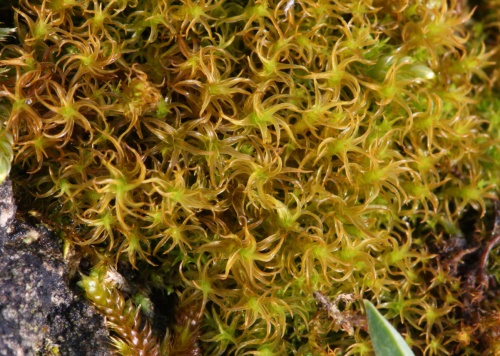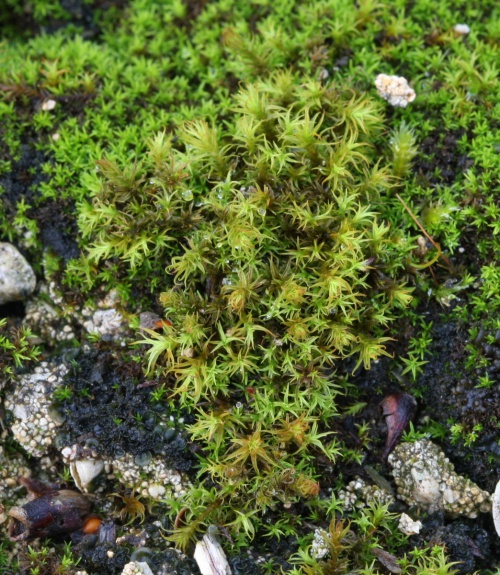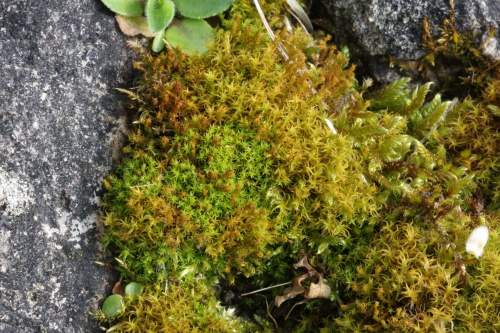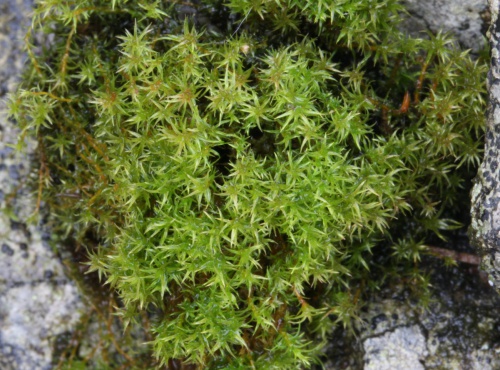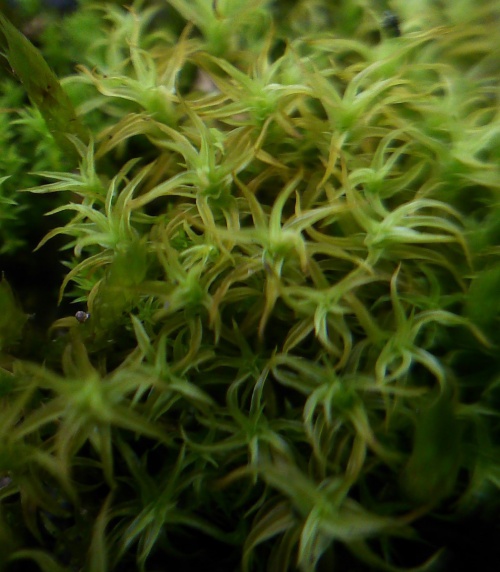Cylindric Beard-moss - Didymodon insulanus
Typical shoots are 0.5 to 3 cm tall, olive-green, and often brownish on the lower part. The narrow upper leaves average 3 to 4 mm in length (longer than the lower leaves), with a long, tapering tip. Each one curves to the side, giving shoots a spiralled appearance when viewed from above and they curl and twist into a characteristic shape when dry. Erect, cylindrical capsules are very rare in spring, and are borne on a wavy seta.
D. insulanus is a lowland moss, usually growing on soil, but may also occur on stone or brick walls, concrete, tarmac, pavements, damp rocks and wood. It also grows on silty soil, tree bases and wooden posts in the flood zone of rivers and streams.
All year round
Common and widespread in Britain. It is less common than D. vinealis in the south and east, but frequent in the north and west.
Fairly frequent in Leicestershire and Rutland.
Leicestershire & Rutland Map
Enter a town or village to see local records
MAP KEY:
Yellow squares = NBN records (all known data)
Coloured circles = NatureSpot records: 2025+ | 2020-2024 | pre-2020
UK Map
Species profile
- Common names
- Cylindric Beard-moss
- Species group:
- Mosses & Liverworts
- Kingdom:
- Plantae
- Order:
- Pottiales
- Family:
- Pottiaceae
- Records on NatureSpot:
- 14
- First record:
- 12/12/1993 (Dennis Ballard)
- Last record:
- 31/01/2021 (Nicholls, David)
Total records by month
% of records within its species group
10km squares with records
The latest images and records displayed below include those awaiting verification checks so we cannot guarantee that every identification is correct. Once accepted, the record displays a green tick.
In the Latest Records section, click on the header to sort A-Z, and again to sort Z-A. Use the header boxes to filter the list.


